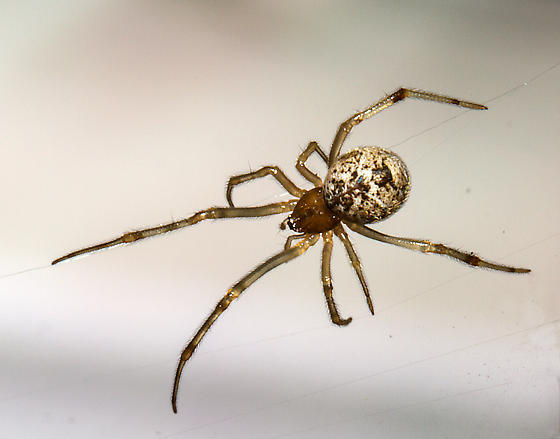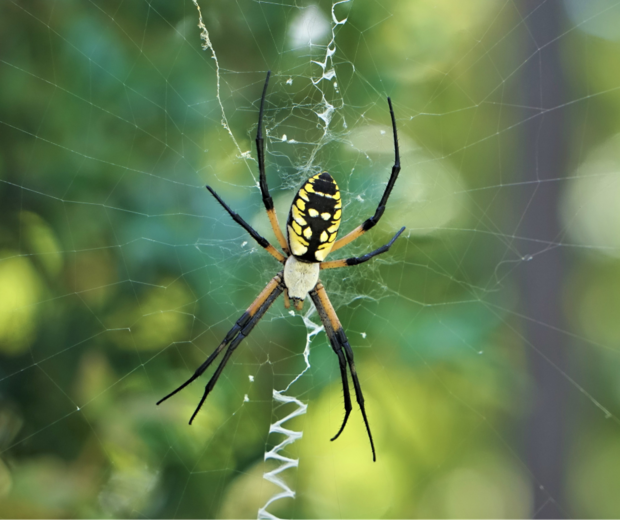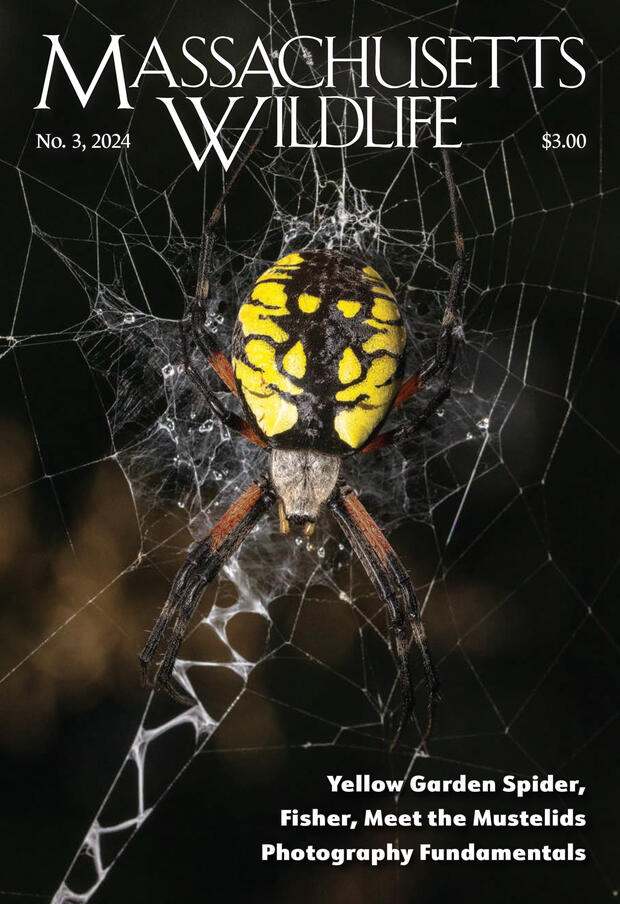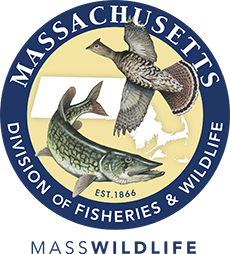- Division of Fisheries and Wildlife
Media Contact
Media Contact, MassWildlife
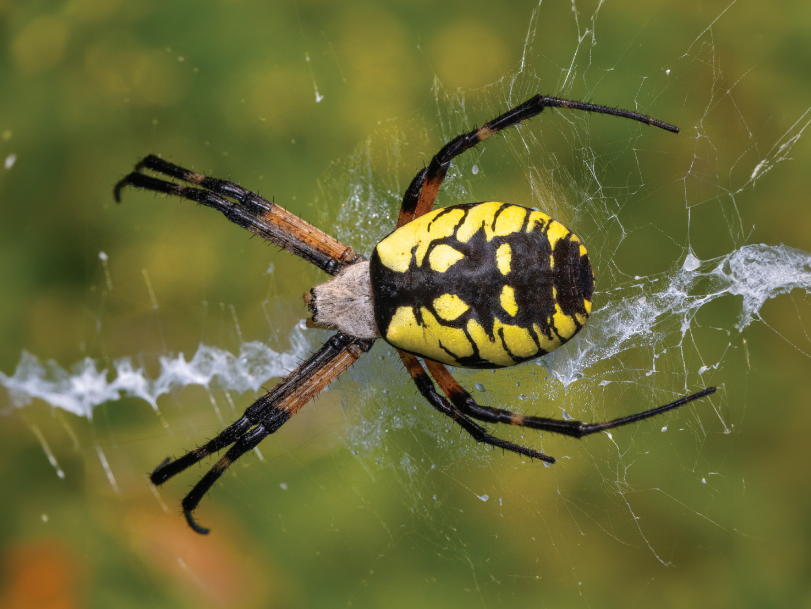
With eight legs, many eyes, and the ability to move around unnoticed, it’s understandable that spiders give many people the “heebie jeebies”. Although all spiders have venom, the overwhelming majority are harmless to people and pets because their fangs cannot break through our skin. Spiders also play an important role in the ecosystems they live in. Sitting in the middle of the food web (pun intended), spiders help control insect populations, including pests like aphids and mosquitoes. They are also a food source for birds, amphibians, reptiles, and fish.
To make spiders a little less spooky, we’d like to introduce you to 3 harmless spiders you may encounter in Massachusetts.
Bold jumping spider
Frequently featured in internet memes because of their large eyes, bold jumping spiders (Phidippus audax) have excellent vision and depth perception. Using their 8 eyes to search for small insects, bold jumping spiders sneak up and jump on their prey to catch them. There are about 300 species of jumping spiders that live in North America and the bold jumping spider is the most common. They get their moniker because they can jump 10–40 times their body length.
Female bold jumping spiders are larger than males, measuring 8–15 mm in length compared to the males at 6–13 mm. The dense bodies, thick legs, and hairy appearance of these spiders may seem spooky but they aren’t dangerous to humans or pets. In fact, these spiders are beneficial to farmers because they eat so many major crop pests.
Common house spider
The common house spider (Parasteatoda tepidariorum) gets its name simply because it is found commonly in homes. They may even make a great roommate as they are known for eating small insects and household pests. These spiders use a traditional web to catch their food and wait to feel the vibrations on their web before collecting their meal. Males and females will share a web for long periods of time and females often build webs close to one another.
Common house spiders can vary greatly in their coloration, usually ranging from tan to nearly black. Males average 3–5 mm long while females are larger at 5–6 mm. They use their small size and their ability to blend in to hide from potential predators. They are not considered dangerous to humans.
Yellow garden spider
Named for their striking color, yellow garden spiders (Argiope aurantia) are expert weavers and can construct a large and complex web in short time. They like to build their webs in areas protected from the wind and can often be spotted in the eaves of houses. They may be seen shaking their web while sitting in the middle which may protect them from predators or ensnare their prey before they can escape. After prey get caught in their web, yellow garden spiders wrap it in silk, inject venom into its body to kill it and liquefy its organs, and save it to eat later. This may sound pretty spooky, but rest assured that yellow garden spiders are not aggressive towards people and their venom does not affect us.
Males and females are sexually dimorphic, meaning that males and females look different. The females can be 3 times as large as males with an average body length reaching up to 25 mm (the diameter of a quarter). Females are also more noticeable with more yellow on their bodies than males. These spiders are not only fascinating to watch, but they also eat many garden pests such as grasshoppers, wasps, and beetles.
The next issue of Massachusetts Wildlife magazine features a story all about the yellow garden spider. Subscribe today at mass.gov/dfw/magazine.

